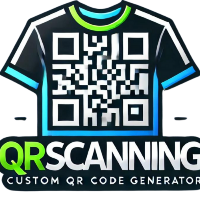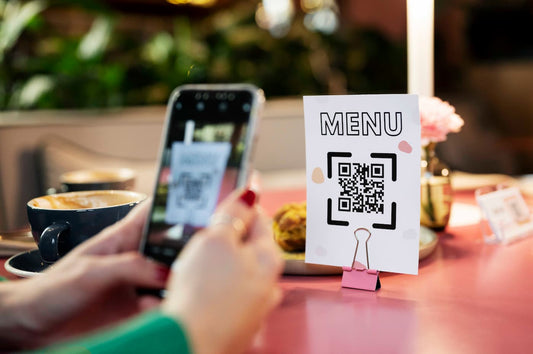
Share
How Tracking and Analytics Powered QR Code Tracking Tools Can Transform Your Business
Estimated reading time: 8 minutes
Key Takeaways
- QR code tracking tools provide insights into scan data for better marketing decisions.
- Tracking and analytics improve conversions and increase ROI.
- Dynamic QR codes and UTM parameters enable advanced tracking capabilities.
- Using QR code analytics dashboards helps monitor campaigns effectively.
Table of Contents
- Introduction: QR Code Tracking Tools and ROI
- Understanding QR Code Tracking
- How to Track QR Code Scans
- QR Code Analytics Dashboard
- Measure QR Code Campaign Success
- Choosing the Right QR Code Tracking Tools
- Enhancing ROI with QR Code Tracking
- Conclusion
- Call to Action
- FAQ
Introduction: QR Code Tracking Tools and ROI
QR codes are now used everywhere—in ads, packaging, stores, events, and digital spaces.
But using them well means more than just printing one. You need tracking and analytics to know if people are scanning them and taking action.
QR code tracking tools give you this power. They show where, when, and how often a QR code is scanned.
When you track QR code performance, you get better data. That leads to smarter marketing, better conversions, and more return on investment (ROI).
Understanding QR Code Tracking
QR code tracking tools are platforms that collect and report scan data.
This means you can see:
- How many times people scanned the QR code
- Where they scanned it (location)
- What device they used
- When the scan happened
- How they interacted after scanning
A trackable QR code for business use is often a dynamic QR code. These codes can be updated later and are connected to analytics tools.
There are two main QR code types:
- Static QR codes: Fixed links, no tracking available
- Dynamic QR codes: Editable links, trackable with full analytics
To enable more advanced results, use UTM parameters—special tags on URLs that allow deeper tracking in tools like Google Analytics.
Using these tools helps businesses market better, test what works, and improve campaigns.
How to Track QR Code Scans
Here's how to set up scan tracking the right way:
- Choose a dynamic QR code generator with analytics: Look for tools that include dashboards (e.g., QR Tiger, Scanova).
- Add UTM parameters to your URL: These tags help break down scan traffic in Google Analytics (e.g., source, campaign).
- Create and share the QR code: Print it on flyers, product labels, posters, or include it in emails.
- Access scan analytics: Either from the QR code platform's dashboard or inside Google Analytics.
-
Monitor your metrics often: Look for:
- Total scans
- Unique scanners
- Device used
- Locations
- Time and date
Tracking Methods
- QR tool dashboard: Built-in tools are easy for quick views.
- Google Analytics integration: Great for deep dives into behavior and conversions.
Tips for Better Data
- Always use dynamic QR codes
- Stay consistent with UTM tags
- Update your QR codes if your links change
QR Code Analytics Dashboard
A QR code analytics dashboard is where all your scan data comes together.
It helps answer questions like:
- Are people using your QR code?
- Where are they scanning from?
- Are your campaigns working?
Important Features to Look For
- Real-time scan tracking
- Location, device, and browser data
- Historic trends over time
- Downloadable reports
- Integration with Google Analytics or CRM
Most dashboards show:
- A live scan map
- Line charts by date
- User behavior flow
- Device and browser share
Measure QR Code Campaign Success
To succeed, you need to track more than just "scan count".
Metrics to Monitor
- Total scans vs. unique scans
- When and where scanning happens
- Devices used
- Conversion rates after scanning
- Bounce rate and page engagement
How to Set Campaign Goals
- Define what success means (engagement, sign-ups, purchases)
- Use UTM codes to connect each goal to its QR code
- Track results inside your dashboard
Real-Use Examples
Retailer campaign: Added dynamic QR codes to product packaging. They saw an 80% increase in product page visits and a measurable lift in sales.
Event marketing: Conference organizer used QR codes on posters, which linked to the sign-up page. They tracked a 3x boost in registration rates.
These results came from clear calls to action, smart QR placement, and proper analytics.
Choosing the Right QR Code Tracking Tools
Use this checklist to pick the best tool:
- Easy to create QR codes
- Offers dynamic QR code functionality
- Has a built-in analytics dashboard
- Allows Google Analytics integration
- Offers branding (custom colors, logos)
- Includes high security and support
- Fits your pricing needs
Top Tools to Compare
-
QR Code Generator
- Basic tracking
- Free and paid plans
- Great for beginners
-
Scanova
- Comprehensive tracking and exports
- Mid-tier pricing
- Best for marketers and SMBs
-
QR Tiger
- Real-time metrics, custom design, API support
- Enterprise-ready plans available
- Ideal for advanced users and teams
Enhancing ROI with QR Code Tracking
Clear analytics help boost ROI.
Here's how QR code tracking supports growth:
- Helps find what works
- Reduces wasted marketing spend
- Supports A/B testing
- Powers smarter campaigns
Mini Case Study
A retail brand ran two ad versions—each with a different QR code. They used tracking and analytics tools to compare performance.
Result:
- Double the conversion rate on their main landing page
- 40% reduction in cost per lead
Future Outlook
- AI tools will make QR dashboards smarter
- Real-time feedback will boost testing
- Marketing automation platforms will link with QR point-of-sale scans
Tracking tech is getting faster, smarter, and more useful every year.
Conclusion
To really win with QR codes, use the right tracking and analytics.
Tools help you measure QR code campaign success, understand your audience, and tweak your strategy.
They are affordable, easy to set up, and powerful to scale.
Use QR tracking to make smarter decisions and boost marketing ROI.
Call to Action
Now's the time to review your existing QR codes. Are they helping your business grow?
If not, explore reliable QR code tracking tools. Set them up with tracking and analytics so you can measure, learn, and improve.
Next Steps
- Try tools like QR Tiger, Scanova, or QR Code Generator
- Add UTM codes to every campaign
- Monitor your dashboard weekly
- Set up Google Analytics integration
Stay ahead—embrace tracking and analytics in every QR code strategy.
Frequently Asked Questions
What is a dynamic QR code?
A dynamic QR code is a type of QR code that can be edited after creation. Unlike static QR codes, dynamic codes redirect to a short URL that can be changed to point to different destinations without reprinting the code. They also provide detailed analytics and tracking capabilities.
How do UTM parameters help in tracking?
UTM parameters are tags added to URLs that help track the source, medium, and campaign of website traffic in Google Analytics. When used with QR codes, they help identify which specific QR code campaigns are driving traffic and conversions.
Can I track QR code scans in real-time?
Yes, most modern QR code tracking tools offer real-time analytics. You can see scans as they happen, including location data, device types, and timestamps through dedicated dashboards or integrated analytics platforms.


